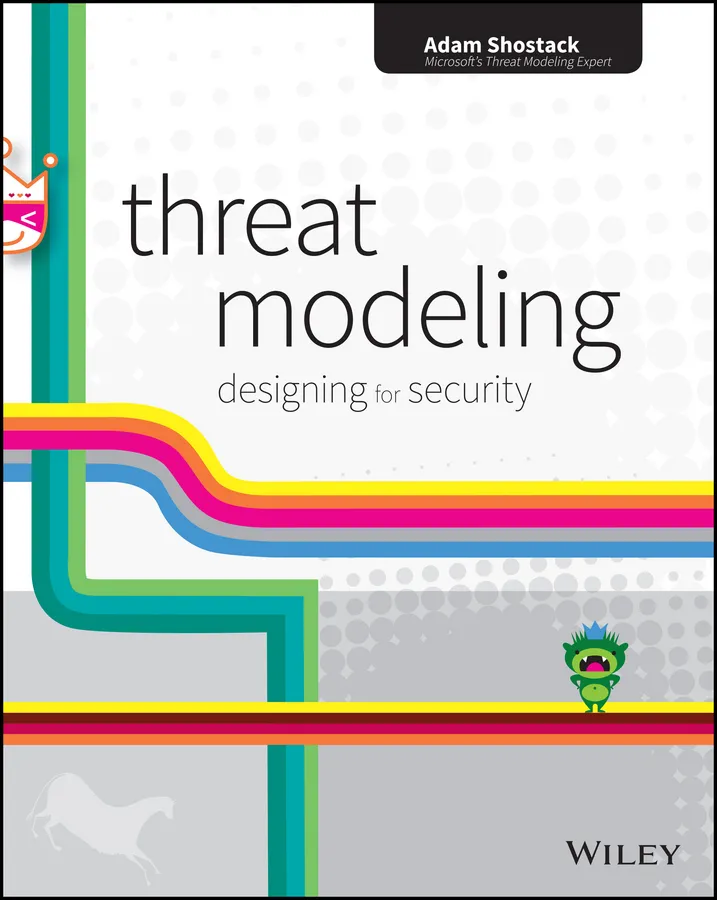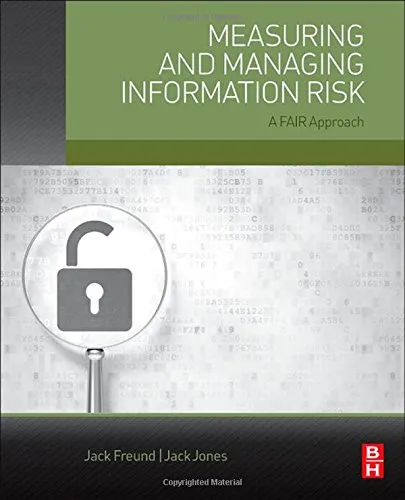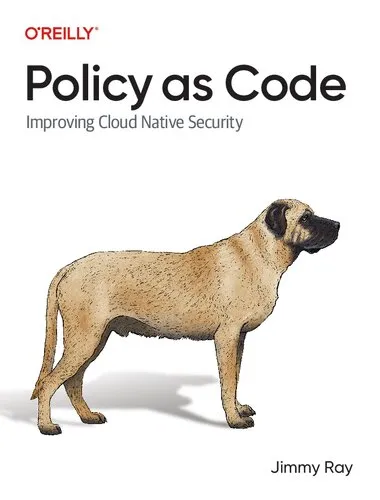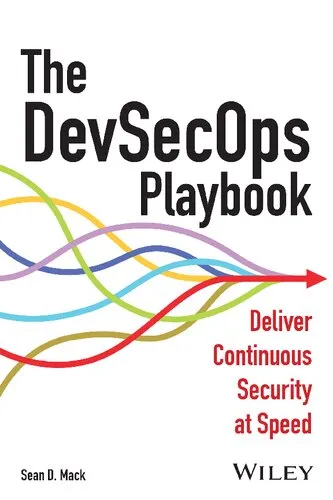Threat modeling: designing for security
4.5
بر اساس نظر کاربران

شما میتونید سوالاتتون در باره کتاب رو از هوش مصنوعیش بعد از ورود بپرسید
هر دانلود یا پرسش از هوش مصنوعی 2 امتیاز لازم دارد، برای بدست آوردن امتیاز رایگان، به صفحه ی راهنمای امتیازات سر بزنید و یک سری کار ارزشمند انجام بدینکتاب های مرتبط:
معرفی کتاب 'Threat Modeling: Designing for Security'
کتاب 'تهدید مدلینگ: طراحی برای امنیت' نوشته آدام شستاک، یک مرجع جامع و کامل در زمینه مدلسازی تهدیدات و روشهای پیشرفته طراحی برای امنیت است. در این کتاب به تفصیل اصول، تکنیکها و ابزارهای کاربردی جهت تحلیل و کاهش تهدیدات امنیتی در سیستمهای نرمافزاری معرفی میشود.
خلاصهای مفصل از کتاب
این کتاب به چهار بخش اصلی تقسیم میشود. در بخش اول، آشنایی با مفاهیم اساسی Threat Modeling ارائه شده است. مفاهیمی همچون شناسایی داراییها، threats و vulnerabilities و چگونگی ارتباط میان این مفاهیم بررسی شده است. بخش دوم به معرفی و تحلیل ابزارها و روشهای متنوعی میپردازد که برای شناسایی و تحلیل threats مورد استفاده قرار میگیرند. بخش سوم شامل مثالهایی واقعی از اجرای Threat Modeling در پروژههای بزرگ است. نهایتاً، بخش چهارم به توصیهها و راهکارهایی برای بهبود طراحی امنیتی سیستمها میپردازد.
نکات کلیدی
- شناسایی و تحلیل تهدیدات به عنوان بخش کلیدی در فرآیند طراحی امنیتی
- معرفی تکنیکهای مختلف از جمله STRIDE, PASTA و LINDDUN برای Threat Modeling
- استفاده از ابزارهای شناختهشده مانند Microsoft Threat Modeling Tool
- تأکید بر اهمیت همکاری تیمهای توسعه و امنیت در فرآیند مدلسازی تهدید
نقلقولهای معروف از کتاب
"مدلسازی تهدید، هنر پرسیدن سوالات درست در مکان و زمان مناسب است."
"خلأ امنیتی همیشه یک واقعیت است، اما با مدلسازی دقیق میتوان احتمال وقوع آن را تا حد امکان کاهش داد."
چرا این کتاب اهمیت دارد
اهمیت این کتاب در این است که به جای تمرکز بر معماریهای خاص یا تکنیکهای معین، بر روی فرآیند تفکر و یک چارچوب مناسب برای تفکر درباره تهدیدات تأکید میکند. این کتاب ابزارهای مفیدی برای توسعهدهندگان، مهندسان امنیت و مدیران پروژه فراهم میآورد تا امنیت را به عنوان یک بخش جوهری و یکپارچه از طراحی و توسعه در نظر بگیرند. با توجه به افزایش پیچیدگی سیستمهای نرمافزاری و رشد پیوسته در تهدیدات سایبری، خطرات امنیتی به مسئلهای مهم و حیاتی در صنعت فناوری اطلاعات تبدیل شدهاند؛ و این کتاب به برداشتن گامهای مؤثر جهت محافظت و ایجاد امنیت کمک میکند.
Welcome to the comprehensive guide on threat modeling, a crucial practice in designing secure systems that anticipate potential threats and vulnerabilities. Let us delve into the structure of the book 'Threat Modeling: Designing for Security' and uncover its insights, essential takeaways, memorable quotes, and the reason it stands as a significant contribution to cybersecurity literature.
Summary of the Book
In 'Threat Modeling: Designing for Security', Adam Shostack offers an exhaustive exploration into the methodologies and processes involved in threat modeling. The book serves as a foundational text for professionals in cybersecurity, software development, and IT management who aim to embed security considerations early in the system design process. Shostack emphasizes the importance of understanding what to build, what can go wrong, and what to do about it. Unlike other security protocols that react to emerging threats, threat modeling proactively anticipates and mitigates risks before they materialize.
Shostack organizes the book into practical lessons beginning with the basic principles of threat modeling. The content gradually progresses towards more complex methodologies like STRIDE (Spoofing identity, Tampering with data, Repudiation threats, Information disclosure, Denial of service, Elevation of privilege) and DREAD (Damage potential, Reproducibility, Exploitability, Affected users, Discoverability). Throughout these detailed explanations, Shostack provides actionable insights, real-world examples, and expert recommendations that serve as valuable resources for practitioners at all skill levels.
Key Takeaways
- Threat modeling is a fundamental component of security-by-design, shifting security left in the development process.
- Understanding attackers’ perspectives helps in identifying vulnerabilities and mitigating risks efficiently.
- Effective threat modeling involves continuous iteration and improvement throughout the system lifecycle.
- Applying structured methodologies like STRIDE and DREAD enables consistent and comprehensive threat identification.
- Collaboration among stakeholders, including developers and security experts, is vital in building secure systems.
Famous Quotes from the Book
"If you don’t know where to start, you’re not alone. Getting started is often the hardest part. But threat modeling is crucial for everyone who designs systems."
"We must strive not to build perfection but to build a system that fails gracefully."
Why This Book Matters
'Threat Modeling: Designing for Security' occupies a unique niche in the cybersecurity community by offering not only theoretical foundations but also practical guidance on implementing threat modeling practices across various contexts. The book is not limited to a single approach; instead, it proposes a toolbox of techniques, enabling readers to select the method best suited to their needs. This flexibility makes it an indispensable resource for anyone involved in designing secure systems.
Moreover, the book prioritizes accessibility and pragmatism, making it suitable for a wide audience, ranging from novice developers to seasoned security practitioners. As cybersecurity threats become increasingly sophisticated, the ability to anticipate and mitigate potential security issues before they escalate is invaluable. Adam Shostack's work empowers readers to proactively safeguard their systems, thereby fostering a more secure technological landscape.
In a world where cyber threats are ever-evolving, 'Threat Modeling: Designing for Security' provides essential tools to understand and combat these challenges effectively. Thus, this book is not just a guide; it is a call to action for proactive security planning, which is integral to the digital future's safety and integrity.
دانلود رایگان مستقیم
شما میتونید سوالاتتون در باره کتاب رو از هوش مصنوعیش بعد از ورود بپرسید
دسترسی به کتابها از طریق پلتفرمهای قانونی و کتابخانههای عمومی نه تنها از حقوق نویسندگان و ناشران حمایت میکند، بلکه به پایداری فرهنگ کتابخوانی نیز کمک میرساند. پیش از دانلود، لحظهای به بررسی این گزینهها فکر کنید.
این کتاب رو در پلتفرم های دیگه ببینید
WorldCat به شما کمک میکنه تا کتاب ها رو در کتابخانه های سراسر دنیا پیدا کنید
امتیازها، نظرات تخصصی و صحبت ها درباره کتاب را در Goodreads ببینید
کتابهای کمیاب یا دست دوم را در AbeBooks پیدا کنید و بخرید
1952
بازدید4.5
امتیاز0
نظر98%
رضایتنظرات:
4.5
بر اساس 0 نظر کاربران
Questions & Answers
Ask questions about this book or help others by answering
No questions yet. Be the first to ask!



















